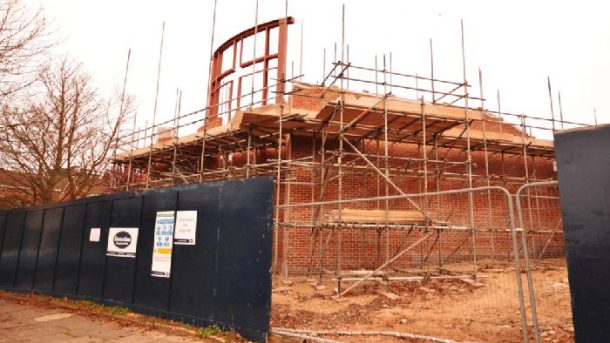Many churches I work with are considering a new or improved building. I have written elsewhere about the more practical things to consider when designing or costing such a project, but here I want to share a few thoughts about some of the more unexpected things to look out for after the project is finished and the building is open for ‘business’.
Expect plans to change. You may well have had clear ideas about who will use the new buildings and in what ways, but be prepared for these to change, often in unexpected ways. Whilst some planned activities may not develop as you had hoped; other things, not previously anticipated, will almost certainly emerge, as both church members and the local cmmunity see the building in operation and think of new uses and opportunities.
Expect a ‘revolving’ door. Many projects have, as one of their planned outcomes (whether stated or not), a desire for more people to join the life of the church as a result of activities they attend in the new building. Things like lunch clubs, keep fit classes etc. may see people who would not ordinarily cross the threshold get a chance to see what else goes on in the building and find a way into church life. This frequently does happen, but the flow can also go the other way, with church members also starting to join new activities in the building, whether run as a ‘church ministry’ or not. This can open opportunities for them to ‘be church’ in fresh contexts as a positive, if unexpected, outcome of your project.
Expect conflict. The new buliding and its uses is likely to be a continuing source of tension as well as joy. A few things to watch out and plan for:
- Tension between those who want to keep it as pristine and beautiful as the day it was opened and those who want to see it well used, even if that leads to a few ‘bumps and scratches’.
- Tension between church and community use. Church members may assume their event should always have priority, even over a previous external booking they were not aware of.
- Tension over boundaries. Who can use the building and when they can use it can create problems; whether it a Saturday night party who left the place less than clean for when church arrive on Sunday, or a group offering an activity which church members may see as conflic8ng with the church’s ethos, values or belief.
Expect more work. An improved, larger building, especially one used by local community groups as well as church, wlll generate extra paperwork and responsibilities. Be it checking booking forms, chasing payments or ensuring that you comply with the appropriate legislation; deciding who will be responsble for both doing and overseeing all this can be an unexpected challenge.
But please don’t let this article put you off. There are plenty of people and churches who have been through this and can offer help and advice. Talk to them as part of your planning process, or contact me if I can help.

